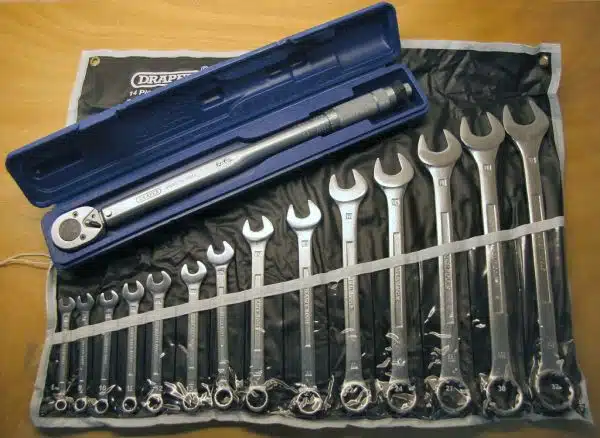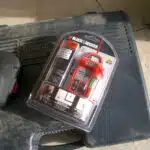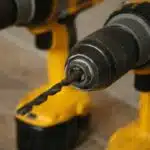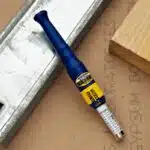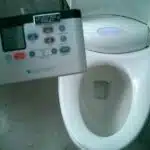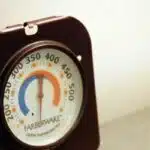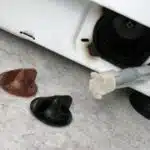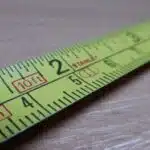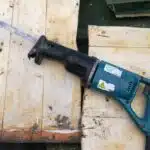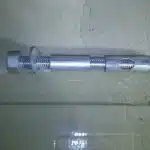The torque wrench is a vital tool in the automotive industry, and its proper use can make all the difference in vehicle safety and performance. The torque wrench is essential for tightening bolts, nuts, and fasteners to precise levels of tension to ensure optimal performance and prevent damage. In this article, we will discuss how to use a torque wrench effectively and safely.
To begin with, understanding the basics of torque is crucial. Torque is a measure of the rotational force required to turn an object around its axis. When applying torque with a wrench, it is essential to apply the correct amount of force to achieve the desired level of tension without exceeding it. This can be achieved by selecting the appropriate torque setting on your wrench and using it correctly. By following these guidelines, you will be able to use your torque wrench accurately and with confidence.
Understanding The Basics Of Torque
Many people are intimidated by the idea of using a torque wrench, but understanding the basics can make it much easier. Calculating torque is the first step in successfully using a torque wrench. Torque is a measure of how much force is applied to an object to make it rotate around an axis or pivot point. To calculate torque, you need to know both the amount of force being applied and the distance between the point where that force is being applied and the pivot point.
Once you have calculated the required torque for your task, it’s essential to understand torque conversion factors. These factors determine how much force you need to apply to achieve a particular level of torque. Most torque wrenches come with conversion charts that help you convert from foot-pounds (ft-lbs) to Newton-meters (Nm) or other units of measurement.
By mastering these basic concepts of calculating and converting torque, you’ll be well on your way to effectively using a torque wrench. Understanding these fundamentals will help ensure that you’re applying the right amount of force in any given situation, which can prevent damage or injury. In the next section, we’ll explore different types of torque wrenches and their specific uses.
Types Of Torque Wrenches
Torque wrenches come in different types, and two of the most common are digital and analog. The former type is equipped with an electronic mechanism that lets you adjust the torque value using a display screen that shows readings in either Newton-meters (Nm) or foot-pounds (ft-lbs). Analog torque wrenches, on the other hand, use a mechanical gauge or dial to indicate the amount of force applied. Some mechanics find digital torque wrenches more convenient because they offer more accurate readings while others prefer analog models for their simplicity and durability.
Different brands also offer various options when it comes to torque wrenches. Some popular names include Snap-On, Craftsman, and Tekton. Each brand has its unique selling point – Snap-On is known for high-quality products but at a premium price; Craftsman offers affordable yet effective options; Tekton provides good value for money with its range of affordable tools. Ultimately, it’s up to you to decide which brand suits your needs best.
When choosing between digital or analog types and various brands, consider factors such as accuracy, ease of use, cost-effectiveness, and warranty coverage. Regardless of your preference, always make sure to follow manufacturer instructions on proper usage and calibration to ensure consistent performance every time. With the right torque wrench on hand, you can perform maintenance tasks with confidence and accuracy.
Moving forward into the next section about ‘choosing the right torque wrench,’ let’s delve deeper into specific considerations when selecting one that meets your requirements.
Choosing The Right Torque Wrench
Moving on from the different types of torque wrenches, it is important to choose the right one for your specific needs. Here are some factors to consider when selecting a torque wrench:
Torque range: Determine the maximum and minimum amount of force needed for your project, and choose a torque wrench that can accommodate that range.
Accuracy: Look for a torque wrench with high accuracy, as even small discrepancies can cause significant errors in your work.
Durability: Consider the materials used in construction and how often you will be using the tool to ensure it can withstand wear and tear over time.
Once you have selected the appropriate torque wrench, it is important to understand how to use it correctly. Start by reading the manufacturer’s instructions carefully and familiarizing yourself with the tool’s features. When preparing to use the torque wrench, follow these steps:
Set the desired torque level on the wrench according to your project’s specifications.
Attach any necessary sockets or adapters securely onto the tool.
Apply steady pressure while turning until you hear or feel an audible click indicating that you have reached the desired level of force.
By properly using a torque wrench, you can ensure accurate and consistent results in your projects while also prolonging the life of both your tools and equipment. Remember to always double-check torque specs before beginning work and recheck periodically throughout to prevent any potential issues down the line.
Reading The Torque Specs
As an automotive repair technician, it is essential to know how to read the torque specifications on your tools. Interpreting readings accurately is crucial in ensuring that all bolts and nuts are tightened to the manufacturer’s recommended torque settings. Failure to do so can result in disastrous consequences such as damaged parts, accidents, and even loss of human life.
When using a torque wrench, it is vital to understand the units of measurement used for the tool. Most torque wrenches measure torque in foot-pounds (ft-lbs) or Newton-meters (Nm). Foot-pounds are commonly used in North America while Newton-meters are widely used internationally. When reading the specifications, ensure that you have selected the correct unit of measurement on your tool.
Adjusting torque settings can be done by setting the desired level on your tool or by using conversion charts if necessary. It is important always to refer back to the manufacturer’s recommendations as different bolts and nuts may require varying levels of torque. Remember also that over-tightening can be just as damaging as under-tightening. Always aim for accuracy when adjusting your torque settings before proceeding with tightening bolts or nuts.
Before torquing a bolt or nut, there are several steps you must take to prepare them properly. These steps include cleaning any debris from the threads and applying lubrication if necessary. Proper preparation ensures that all forces applied during torquing go directly into tightening rather than overcoming any frictional forces present on dirty or rusty threads. By following these steps, you can guarantee that you will achieve accurate and precise fastener torquing every time.
Preparing The Bolt Or Nut For Torquing
After reading the torque specs, it is time to prepare the bolt or nut for torquing. Before proceeding with the actual tightening process, it is essential to clean and lubricate the bolt or nut. This will ensure that the torque wrench will work efficiently and accurately. Dirt and debris can affect the accuracy of the torque wrench, causing incorrect readings.
Cleaning and Lubrication is a crucial step before using a torque wrench. To begin, wipe down the bolt or nut with a clean rag to remove any dirt or debris present on its surface. Next, apply some lubricant onto its threads. The lubricant should be compatible with the material of both components being fastened together.
Torque Wrench Accessories are available in different shapes and sizes to suit various applications. These accessories include sockets, extensions, adaptors, and universal joints that help achieve accurate torquing even in hard-to-reach areas. Using proper accessories will enhance both safety and accuracy when working with a torque wrench.
Next up is setting the torque wrench which determines how much force needs to be applied to tighten a bolt or nut correctly without damaging the component or fastener itself. We will discuss this aspect in detail in our subsequent section below.
Setting The Torque Wrench
Setting up a torque wrench correctly is crucial to ensure that the desired tightening force is achieved. The initial step in setting up a torque wrench is to check its calibration. You can do this by using a torque checker or sending it for calibration. If you find any discrepancies, make sure you calibrate it accordingly.
Next, select the appropriate socket size and attach it to the torque wrench. It’s essential to match the socket size with the bolt head size to prevent any slippage or damage during use. Once attached, set the desired torque value on the wrench by turning its handle or adjusting knob until it reaches the required setting.
Common mistakes people make when setting up a torque wrench include selecting an incorrect socket size, not checking its calibration before use, and failing to adjust it accurately according to specifications. Troubleshooting techniques involve checking for any wear and tear on the tool and ensuring that all parts are assembled correctly before use.
Now that you have set up your torque wrench properly, you are ready to move onto using it effectively. In the next section, we will guide you through how to use your newly calibrated tool efficiently to achieve accurate tightening results every time.
Using The Torque Wrench
A torque wrench is a critical tool for achieving accurate and consistent fastener tightening in automotive and industrial applications. With the ability to measure the amount of force applied to a bolt, it helps avoid overtightening or undertightening, which could lead to component failure or damage. Using different units of measurement such as foot-pounds, Newton-meters, or inch-pounds, it caters to different types of bolts and nuts with varying sizes and strengths.
However, common mistakes in using torque wrenches can lead to inaccurate readings, compromising the effectiveness of the tool. One such mistake is misinterpreting the display on the wrench due to incorrect calibration or improper handling. Another error involves applying lubricants on the threads or under the head of bolts without adjusting for frictional effects, leading to over-torquing that could damage threads or strip nuts.
To use a torque wrench effectively, it is crucial to follow manufacturer’s instructions precisely. Before use, check if it requires an initial calibration or zeroing out. Ensure that you’re using compatible socket sizes and attachments that fit correctly on your fasteners without slipping off. When tightening bolts or nuts with a torque wrench, apply force steadily and smoothly until reaching the desired value indicated by the wrench’s display. Using different units requires conversion before setting up; make sure you select the correct unit based on your application’s requirements.
Applying torque in stages ensures even distribution of load among multiple bolts or joints while avoiding uneven tightening that can cause stress concentrations and premature failure. This process involves dividing total torque into several increments applied sequentially from one bolt to another in a predetermined pattern until reaching full tightness. This approach helps compensate for elastic deformation in materials subjected to high pressures and prevents stripping threads due to excessive forces concentrated at one point. Understanding how to apply torque in stages can help achieve optimal performance and longevity of components subjected to high loads and vibrations over time.
Applying Torque In Stages
Having covered the basics of using a torque wrench, it is important to now discuss how to apply torque in stages. This technique is used for tightening bolts that require more than one pass, and ensures that the appropriate amount of torque is applied to each bolt. To begin, start with a lower torque setting and tighten all bolts in a circular pattern. Then, repeat the process with a higher torque setting until reaching the desired level.
One reason for this technique is to prevent damage to the torque converter or other parts of the engine. When applying too much force at once, these parts can become damaged and require costly repairs. Additionally, using a torque limiter can be helpful when applying torque in stages because it prevents overtightening. This mechanism will automatically stop the wrench from tightening once it reaches the set limit.
In order to ensure accuracy when using a torque wrench, it is essential to calibrate it regularly. Over time, these tools can become less accurate due to wear and tear or improper storage. By calibrating your torque wrench periodically using a specialized tool or service, you can maintain confidence in its readings and avoid any potential safety hazards associated with inaccurate readings.
Calibrating Your Torque Wrench
Checking accuracy is the first step in calibrating your torque wrench. Before using the tool, you need to check if it is still accurate. To do this, you can use a torque tester or a calibration machine. These devices will help you measure the accuracy of your torque wrench and determine if it needs adjustment.
Once you have checked the accuracy of your torque wrench, the next step is to adjust its settings. This process involves adjusting the torque wrench to ensure that it delivers the correct amount of force required for each specific application. You can adjust your torque wrench either by turning a dial or by using a special key that comes with the tool. It’s important to follow the manufacturer’s instructions carefully when adjusting your torque wrench to avoid damaging it.
To maintain the accuracy of your torque wrench, you should have it recalibrated periodically. The frequency of calibration depends on how often you use the tool and how critical its application is. For example, if you use your torque wrench every day, you may need to calibrate it more often than if you only use it occasionally. Always refer to the manufacturer’s guidelines for recommended calibration intervals.
Four important things to remember when calibrating your torque wrench:
- Use a reliable tester or calibration machine.
- Follow manufacturer’s instructions when adjusting settings.
- Recalibrate periodically as recommended by manufacturer.
- Always wear appropriate personal protective equipment (PPE) when working with tools and equipment.
With these tips in mind, you can keep your torque wrench functioning accurately and safely for years to come. In maintaining your torque wrench, there are several steps that need consideration as well such as proper storage and handling, cleaning after usage, and regular inspection for signs of wear and tear which will be discussed in further detail in subsequent sections below.
Maintaining Your Torque Wrench
As with all tools, it is essential to keep your torque wrench in top condition to ensure reliable and accurate performance. Proper cleaning techniques and storage solutions can help prolong the life of your torque wrench.
Cleaning techniques for a torque wrench are relatively simple. To prevent corrosion, wipe down the tool after each use with a clean, dry cloth. For more stubborn grime or debris, use a mild soap solution and rinse thoroughly with water. Avoid using harsh chemicals or abrasive materials that could damage the tool’s finish or internal components.
When it comes to storage solutions, keeping your torque wrench in a dry location away from extreme temperatures will help prevent rust and damage. Consider investing in a protective case to keep your tool secure and protected from accidental drops or impacts. Storing your torque wrench properly will not only extend its lifespan but also ensure that it is ready for use when you need it.
Transitioning into the next section on troubleshooting common issues, it’s important to note that even with proper maintenance and care, issues may arise with your torque wrench. Understanding how to troubleshoot common problems will help you quickly identify and fix any issues so that you can get back to work without delay.
Troubleshooting Common Issues
Common mistakes that people make when using a torque wrench can lead to inaccurate readings and ultimately cause damage to the equipment. One of the most common mistakes is using the wrong unit of measurement. It’s important to ensure that you’re using the right unit of measurement for your wrench, whether it’s foot-pounds or Newton meters.
Another mistake is not calibrating your torque wrench before use. A torque wrench that hasn’t been calibrated can give you inaccurate readings, which can lead to over-tightening or under-tightening bolts, causing damage to your equipment. Best practice is to calibrate your torque wrench regularly, especially if it has been dropped or exposed to extreme temperatures.
To avoid these issues, it’s important to follow some best practices when using a torque wrench. Always read the manufacturer’s instructions carefully and make sure you understand them fully before use. Ensure that the bolt threads are clean before applying any force with your torque wrench. And always apply force in a smooth and steady manner, avoiding sudden jerks or pulls.
In conclusion, understanding common mistakes and adopting best practices can help you get accurate results from your torque wrench while avoiding damage to your equipment. However, safety should always be at the forefront of your mind when working with any automotive tool or equipment. In the subsequent section, we’ll discuss some important safety precautions to take when using a torque wrench in order to minimize the risk of accidents and injuries.
Safety Precautions When Using A Torque Wrench
As an automotive tool and equipment writer, it is important to highlight the significance of calibration when it comes to using a torque wrench. According to a study conducted by the National Institute of Standards and Technology (NIST), incorrect calibration results in 70% of torque-related failures. This highlights the importance of ensuring your torque wrench is calibrated properly before use.
In addition to proper calibration, there are also common safety hazards that must be taken into consideration when using a torque wrench. One such hazard is over-torquing, which can lead to damaged components or even injury. It is important to always follow manufacturer specifications and guidelines when using a torque wrench. Another hazard is failing to properly secure fasteners before applying torque. This can result in stripped threads or other damage.
Overall, understanding the importance of calibration and being aware of common safety hazards can greatly improve the effectiveness and safety of using a torque wrench. By taking these precautions, you can ensure that your work is accurate and prevent any unnecessary damage or injury.
Moving forward into our next section, we will discuss when it is appropriate to use a torque wrench and how to properly select the correct one for your specific needs.
When To Use A Torque Wrench
Knowing when to use a torque wrench is crucial in maintaining the safety and integrity of your vehicle. One of the most common mistakes people make is assuming that they only need to use it when dealing with engine components. However, there are many other parts of your car that require proper torque settings, such as wheels, suspension components, and even your oil filter. It is important to read your vehicle owner’s manual carefully to determine which parts require torque specifications.
Proper technique is also essential when using a torque wrench. Make sure the fastener and the threads are clean before applying any force. Additionally, always check the torque setting on the wrench before beginning work. Use smooth and steady pressure until you hear or feel a click from the wrench indicating that you have reached the desired level of tightness. Avoid over-tightening bolts or nuts as this can lead to damage or breakage.
The importance of torque calibration cannot be overstated. Over time, a torque wrench can lose accuracy due to regular wear and tear or mishandling. Therefore, it is crucial to have your tool calibrated regularly by a professional mechanic or service center. This will ensure that your wrench is providing accurate readings, preventing any potential damage caused by improper tightening techniques.
With proper understanding of when to use a torque wrench, correct technique, and regular calibration, you can safely and effectively tighten fasteners on various components of your car. In turn, this will save you time and money by preventing costly repairs caused by loose bolts or over-tightened fasteners. Next step we will discuss benefits of using a torque wrench in detail.
Benefits Of Using A Torque Wrench
As an automotive tool and equipment writer, it is important to highlight the advantages of using a torque wrench. One of the main benefits is accuracy. Torque wrenches allow for precise tightening of bolts and nuts, ensuring that they are neither under-tightened nor over-tightened, which can lead to mechanical failure or damage.
In addition to accuracy, using a torque wrench also helps prevent stripping or damaging threads. Over-tightening can cause threads to be stripped, while under-tightening can lead to loose bolts that may eventually fall out. A torque wrench ensures that the correct amount of force is applied without damaging the threads.
The importance of using a torque wrench cannot be overstated when working with critical components such as engine blocks and cylinder heads. The proper application of torque can significantly affect the performance and longevity of these parts. In fact, many manufacturers specify specific torque values for their components, making a torque wrench essential for proper installation.
Overall, the advantages of using a torque wrench are clear: increased accuracy, prevention of thread damage, and improved component performance. In the next section, we will explore some tips and tricks for effectively using a torque wrench in various applications.
Tips And Tricks For Using A Torque Wrench
When using a torque wrench, it’s important to take note of some tips and tricks to ensure accurate and consistent results. One common mistake is not properly calibrating the wrench before use. Make sure to check and adjust the settings according to manufacturer instructions or use a torque calibration tool to ensure that you’re applying the correct amount of force.
Another tip is to use torque wrench accessories such as extensions and adapters for hard-to-reach areas or odd angles. These accessories can help make your job easier while still maintaining accuracy in torque application. Additionally, it’s important to refer to torque conversion tables when working with different units of measurement. Converting between Newton-meters, foot-pounds, and other units can be confusing without proper reference material.
For advanced techniques, consider using a click-type or digital torque wrench for more precise control over applied force. These types of wrenches provide audible or visual signals when the desired torque level has been reached. Additionally, practicing proper technique such as keeping the wrench perpendicular to the fastener and applying force smoothly can also improve accuracy.
Incorporating these tips and tricks into your torque wrench use can lead to better results in your automotive projects. By avoiding common mistakes, utilizing accessories where appropriate, referring to conversion tables when needed, and considering advanced techniques, you can achieve consistent and accurate results every time you use a torque wrench.
Conclusion
The proper use of a torque wrench is essential for ensuring safe and effective assembly of parts in the automotive industry. Understanding the basics of torque and choosing the right type of wrench are key to achieving accurate results. Reading torque specifications and preparing bolts or nuts for torquing are also important steps in using a torque wrench.
Safety precautions should never be overlooked when using a torque wrench, as improper use can lead to serious injury or damage to equipment. Knowing when to use a torque wrench and understanding its benefits are crucial for any technician working in this field. Properly utilizing tips and tricks for using a torque wrench can help improve accuracy and efficiency.
As the old adage goes, “measure twice, cut once.” Similarly, taking the time to properly use a torque wrench will save time, money, and potentially even lives in the long run. By following these steps and always prioritizing safety, technicians can ensure successful assembly of automotive parts with minimal risk of error or failure.
Image Credits
- “Lovely new metric spanners and torque wrench waiting to be used on the Caterham” by exfordy (featured)

